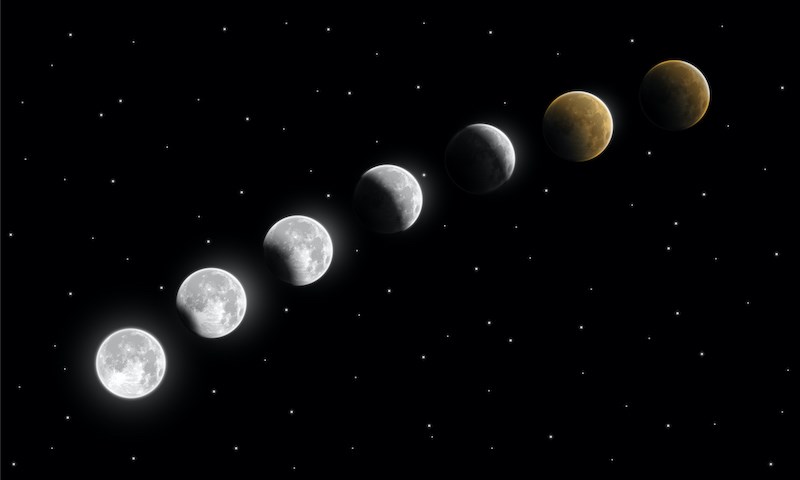The longest partial lunar eclipse of the century will be viewable in Vancouver skies this week.
The National Aeronautics and Space Administration (NASA) states that the rare lunar event will commence locally on Thursday (Nov. 18) and last through the night until the early hours of Friday morning.
This part of the eclipse is visible in all of North America, as well as large parts of South America, Polynesia, eastern Australia, and northeastern Asia.
In total, the eclipse will last for three hours, 28 minutes and 23 seconds; it will also be the longest lunar eclipse in 580 years, according to Space.com.
The lunar event will also coincide with the full beaver moon. The moon will be at its fullest in Vancouver on Nov. 19 at 12:57 a.m., according to timeanddate.com. However, the moon will appear nearly full throughout the night.
Why the full "beaver" Moon?
"This is the time of year when beavers begin to take shelter in their lodges, having laid up sufficient stores of food for the long winter ahead,” reports Farmer’s Almanac. "During the time of the fur trade in North America, it was also the season to trap beavers for their thick, winter-ready pelts."
While it is commonly known as the beaver moon, it was also called the full frost moon by other North American tribes.
Eclipse viewing schedule in Metro Vancouver
The moon will enter the earth's penumbra (the outer part of the shadow) on Nov. 18 at 10:02 p.m. "The Moon begins to dim, but the effect is quite subtle," explains NASA.
At 11:19, the partial eclipse beings, as the moon enters the earth's umbra. NASA describes how it looks like "a bite is being taken out of the lunar disk" to the naked eye, as the moon moves into the umbra. The part of the moon inside the umbra will appear very dark.
At 12:45 a.m. on Nov. 19, the red colour will become visible as over 95 per cent of the moon's disk is in the umbra. NASA notes that the colour may be easier to observe through binoculars or a telescope. Moon-gazers may also use a camera on a tripod "with exposures of several seconds will bring out the colour," but it will overexpose the lit part of the moon.
The eclipse will reach its peak at 1:03 a.m.; this is the best time to view the red colour.
At 1:20 a.m. the redness will fade away as less than 95 per cent of the moon is in the earth's umbra. Now, it will appear that a bite has been taken out of the opposite side of the moon.
The partial eclipse will end at 2:45 a.m. as the "whole Moon is in Earth’s penumbra, but again, the dimming is subtle," notes NASA.
The penumbral eclipse will end at 4:04 a.m.
Sky-watchers should opt to travel as far away from city lights as possible in order to avoid light pollution that will obscure the clarity of heavenly bodies. While this works best in more remote places, anywhere that has a higher elevation will also provide more ideal viewing conditions.



